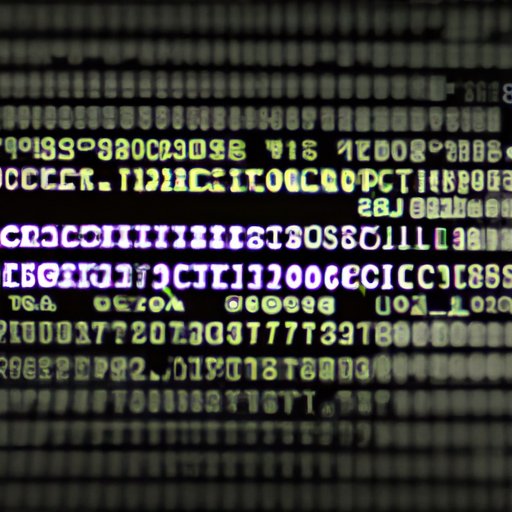Introduction
ASCII stands for American Standard Code for Information Interchange and is one of the most widely used text encoding systems in computing. The ASCII system was developed in the early 1960s as a way to standardize data exchange between computers. It is used to represent characters (letters, numbers, punctuation marks, etc.) as numeric values that can be read and processed by computers.
How ASCII Encoding Works
The ASCII system is based on a 7-bit binary code which assigns a unique numerical value to each character. These numerical values are usually represented in hexadecimal form. Each character is assigned a number from 0 to 127, with each number representing a specific character. For example, the number 65 represents the letter A, while the number 97 represents the letter a. The ASCII system also includes a variety of control characters, such as backspace, line feed, and carriage return, which are used to control how data is displayed or printed.

Exploring Different Variations of ASCII
Since its development in the 1960s, the ASCII system has been extended and modified to include additional characters. For example, the 8-bit Extended ASCII system supports characters from 128 to 255, while the 16-bit Unicode system supports more than 65,000 characters. Although these extended versions of ASCII support additional characters, they are still based on the same underlying principles.

Impact of ASCII on Computing
ASCII has had a significant impact on computing since its introduction. According to a study by the International Organization for Standardization, “ASCII remains the most commonly used character encoding system” in the world. It is used in a wide range of software applications, from email programs to web browsers, and is essential for transferring data between different computer systems.
Comparing ASCII to Other Encoding Systems
Although ASCII is the most widely used text encoding system, there are other encoding systems available. For example, the UTF-8 encoding system is an 8-bit version of Unicode that supports a greater range of characters. Another popular encoding system is the ISO 8859 family, which supports a variety of languages and scripts. Each encoding system has its own advantages and disadvantages, so it is important to consider the specific needs of your application when selecting an encoding system.

Demonstrating How to Convert Text Into ASCII Code
Converting text into ASCII code is relatively simple. All you need is a text editor and the following steps:
- Open the text editor and type the text you want to convert.
- Select the text and choose “Save As” from the File menu.
- In the Save As window, select “ASCII” from the Format dropdown list.
- Click “Save” to save the file.
Once the file is saved, the text will be converted into ASCII code. The code will be visible when you open the file in a text editor.
Conclusion
ASCII is a text encoding system that has been used in computing since the 1960s. It is based on a 7-bit binary code that assigns a numerical value to each character. It is used in a variety of software applications and is essential for transferring data between different computer systems. Although ASCII is the most widely used text encoding system, there are other systems available, such as UTF-8 and ISO 8859. Finally, converting text into ASCII code is relatively simple and can be done using a text editor.
(Note: Is this article not meeting your expectations? Do you have knowledge or insights to share? Unlock new opportunities and expand your reach by joining our authors team. Click Registration to join us and share your expertise with our readers.)
